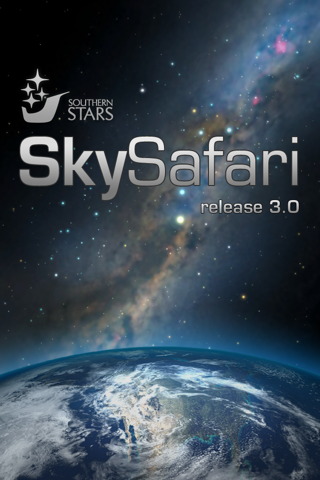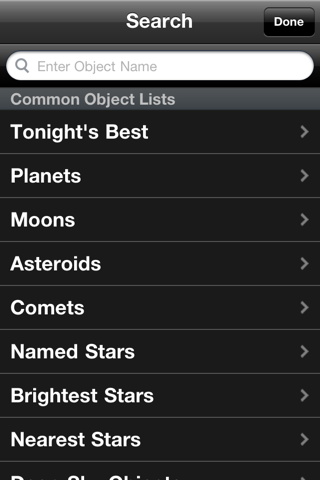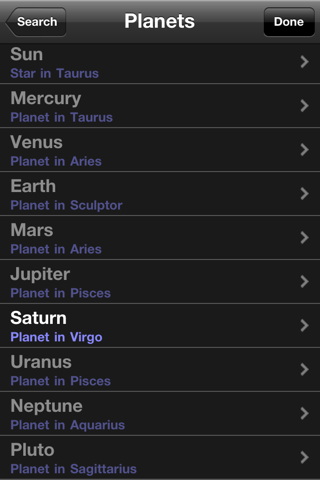 |
Posted: 31 May 2011 |
|
|
 SkySafari 3
SkySafari 3
Southern Stars
$2.99
Southern Stars provided me with a "redeem code" for the basic version of "SkySafari 3" (iTunes App Store link), one of three new versions of SkySafari, previously reviewed as "SkyVoyager". There are two other versions, reviewed here: "SkySafari 3 Plus" and "SkySafari 3 Pro". All three versions of SkySafari 3 require iOS 4 or later, and are "universal" apps for iPhone, iPad, and iPod Touch. I used SkySafari 3 on my iPhone 4.
As described by Southern Stars:
"50 MB. 120K stars, no telescope control.
"The basic version of SkySafari 3 shows you 120,000 stars, plus 220 of the best-known star clusters, nebulae, and galaxies in the sky. It displays the Solar System's major planets and moons using NASA spacecraft imagery, and includes the best-known 20 asteroids and comets."
See the iTunes link above for a complete description of what is new in SkySafari 3.
When you first launch SkySafari 3 ("SS3" for short), you get asked about using your location, which sets the app up for displaying the sky where you are. It then displays a realistic view of your sky. I initially configured the app with my desired Settings (discussed later) and here is what the app now shows on startup (updated for the correct date and time):

The display shows mythical constellation depictions and the setting sun along with simulated terrain at the bottom. The constellation figures fade in and out very nicely as you move the display to different locations in the sky. You can zoom the screen in or out by holding your finder down on the lower right or left corner (where the "+" and "-" appear) or you can pinch to change the zoom level. Zooming in on a planet will display the moons (if any) in their proper configuration for the displayed date/time. This is useful when at the telescope and you want to see which of Jupiter's or Saturn's moons you are viewing. The display works in both portrait and landscape orientations.
The toolbar at the bottom is now "swipeable" and displays a second set of icons when swiped:
![]()
As mentioned in the app description, there are only a limited number of objects are in the database. You can search for any object in the database:

You can also tap a category and see objects in that category. Objects that are not currently visible are dim. But you can still select them to get info on them, including rise time.


Besides data, you can also see a description of the object:

The Setting screen lets you configure many of the app's display options:

The one thing I missed in the basic SS3 version was being able to set for 24-hour time. That feature is only in the SkySafari 3 Plus and SkySafari 3 Pro versions. But other than that, the basic version lets you control quite a lot of how the display will appear.
The Time mode lets you step forward or backward through time, as seen here:

The Compass and Gyro modes are mutually exclusive. With Gyro you have to first aim the device at a known object. Once you do that, SS3 follows you around. Compass avoids the aiming step. The Night mode overlays the display with red:

SS3 includes "SkyWeek" from Sky & Telescope, previously available as a separate free app:

SkyWeek is a useful tool for planning your observing sessions and describes the major objects and events occurring in the next week.
Full app Help is also available:

Using SS3, as with the previous versions, is simple yet very effective, useful, and accurate. The app's basic features should satisfy anyone who wants to know what's in the sky at any time. SkySafari 2 was my most used app while at the telescope. And if I did not need the additional capabilties offered in one of the other versions, SkySafari 3 (basic) would provide much of the capabilities needed while at the telescope. For the price, you can't go wrong with the basic version of SkySafari 3.
Go to the ETX site.
Go to the Cassiopeia Observatory site.